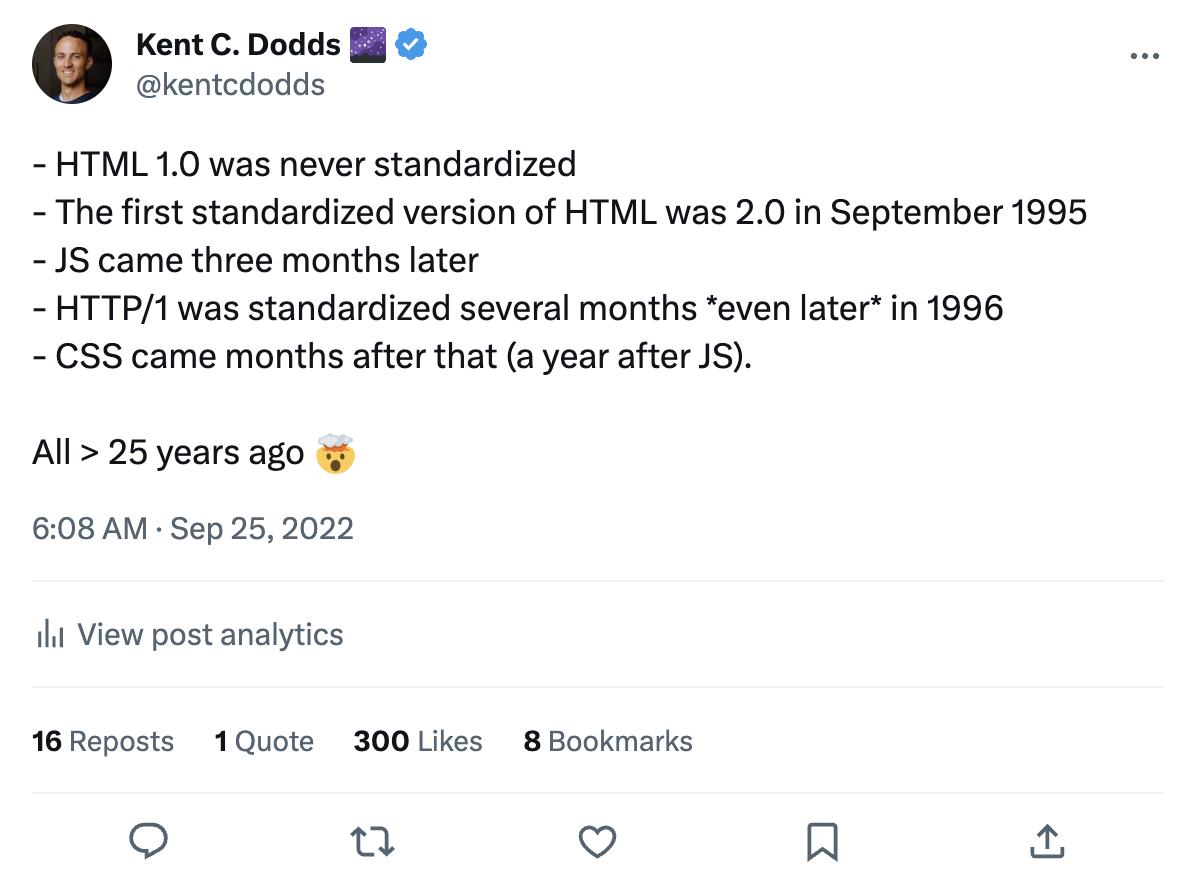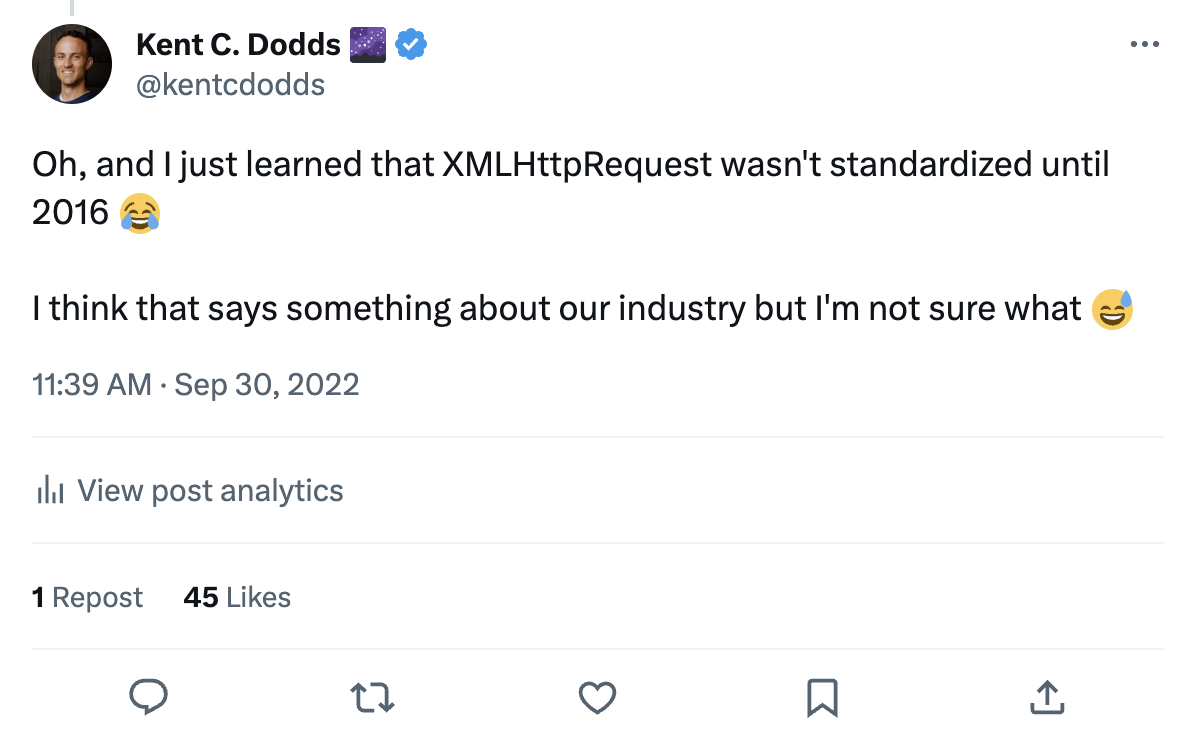The Web's Next Transition
Kent C. Dodds


Where we came from, where we are, and where we're going.

Let's wake up

Your brain needs this 🧠
What this talk is
- A journey through time as a web dev
- Forward looking
- A bit of a game

What this talk is not
- Comprehensive

Let's
Get
STARTED!


<a href="/profile">Your Profile</a>
<form method="post" action="/edit/profile">
<label>
Username: <input name="username" />
</label>
<button type="submit">Submit</button>
</form>
- Multi-Page Apps (MPA)
- Progressively Enhanced Multi-Page Apps (PEMPA)
- Single Page Apps (SPA)
- The Next Transition
Web Architectures
Follow the code
- Persistence
- Routing
- Data fetching
- Data mutation
- Rendering logic
- UI Feedback
Multi-Page Apps (MPA)
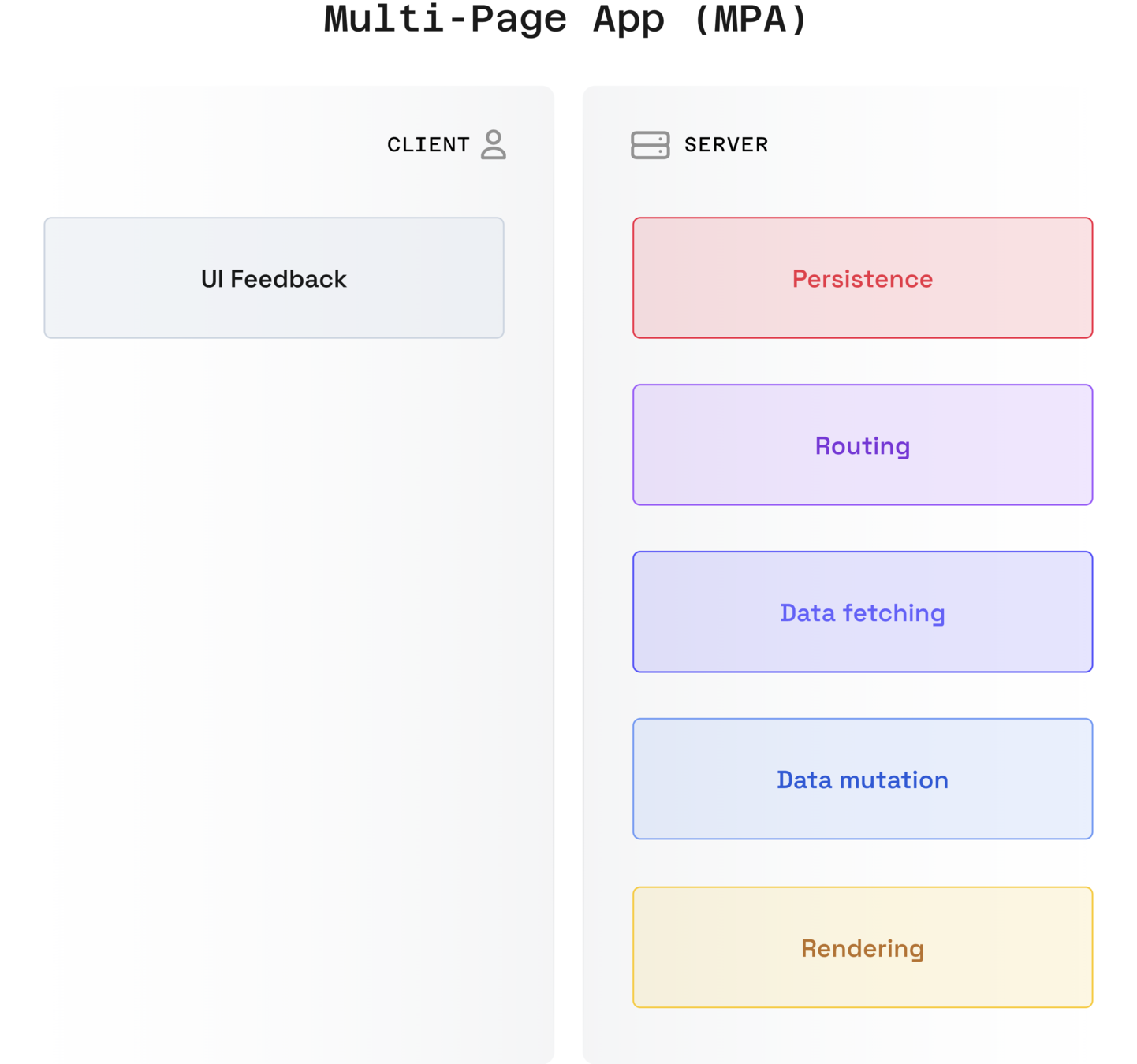
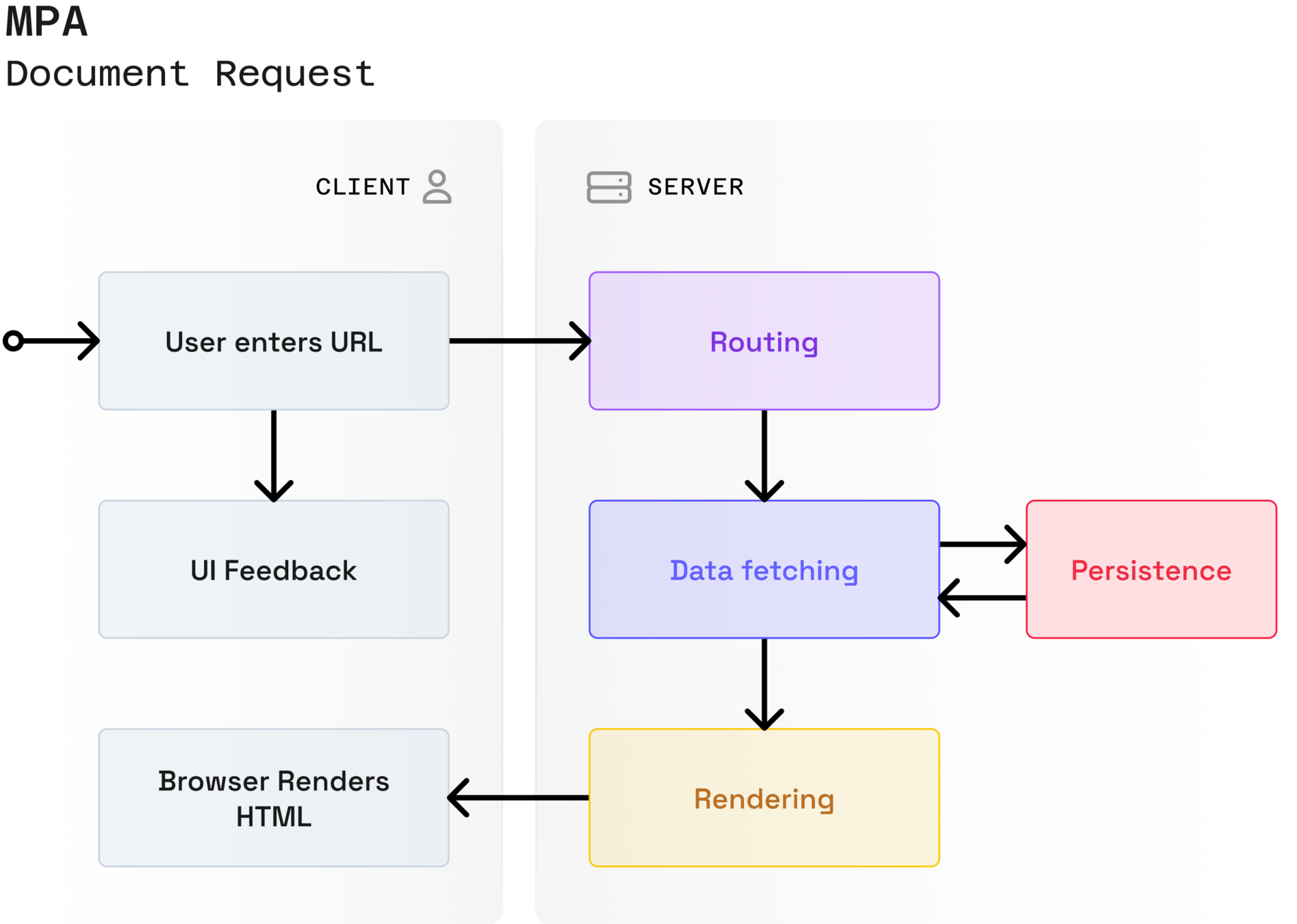
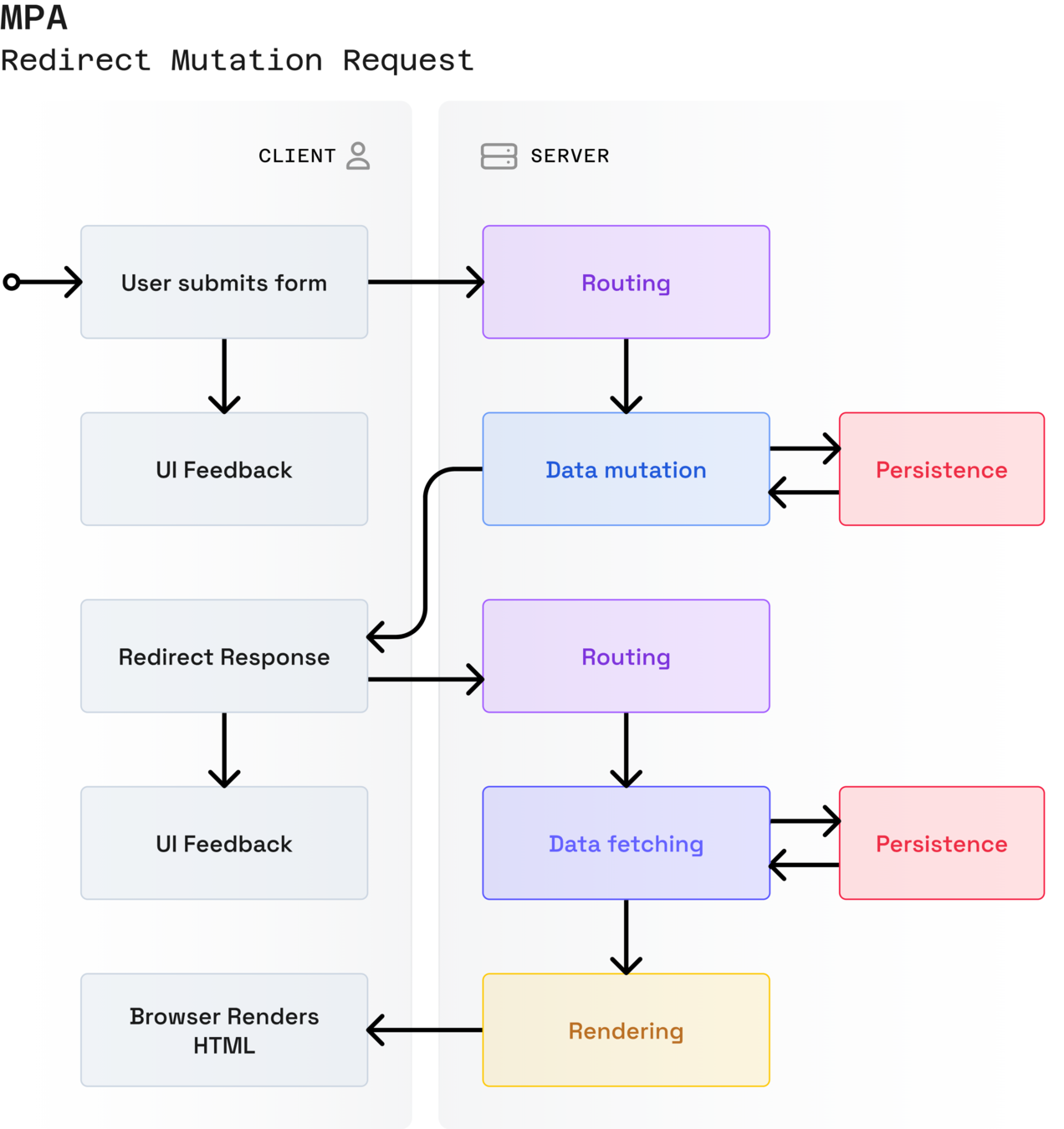
Pros
- Simple mental model
- Only way to do it 😅
Cons
- Full-page refresh
- Lack of UI feedback control
Multi-Page Apps (MPA)
Progressively Enhanced Multi-Page Apps (PEMPA)
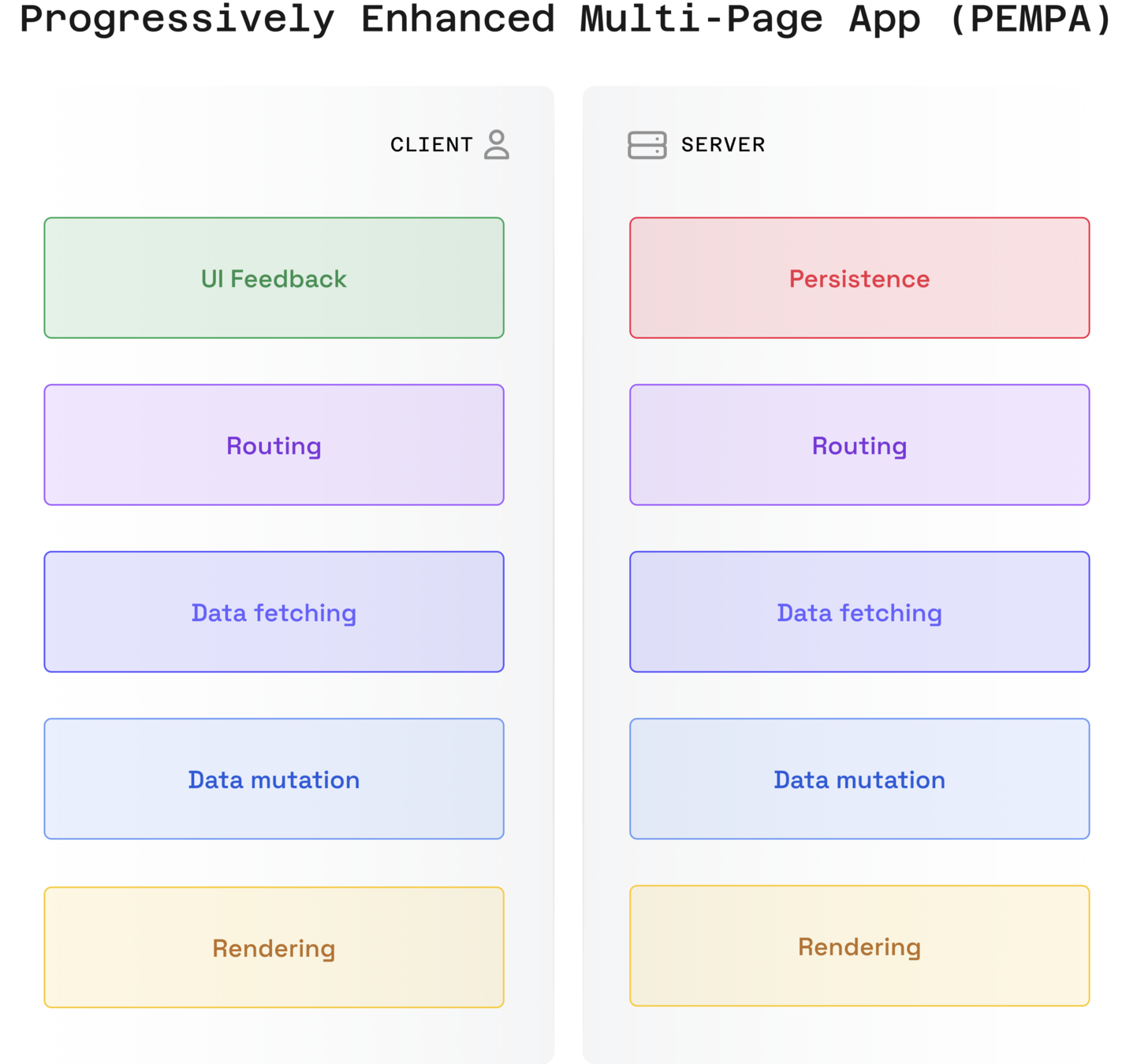
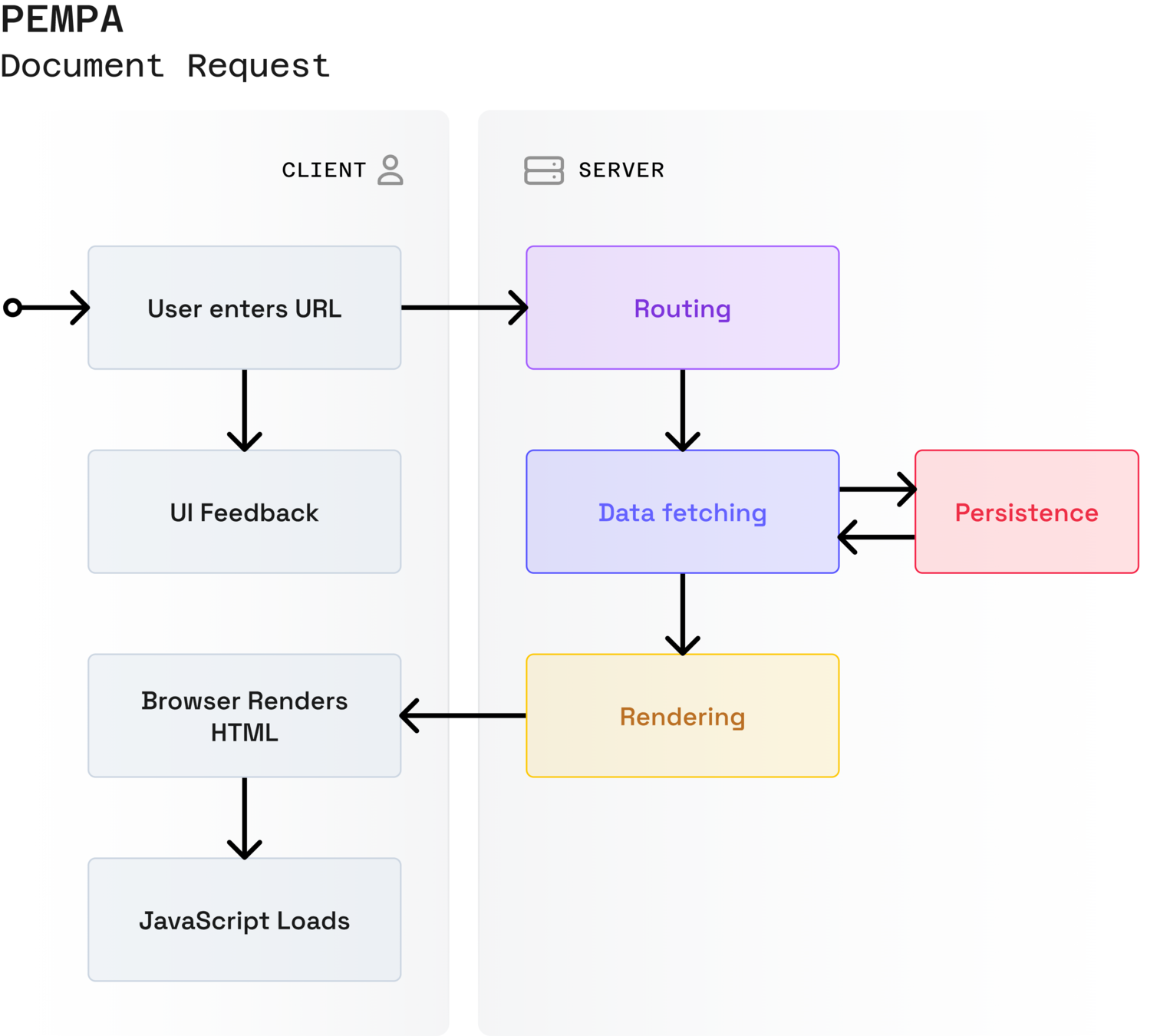
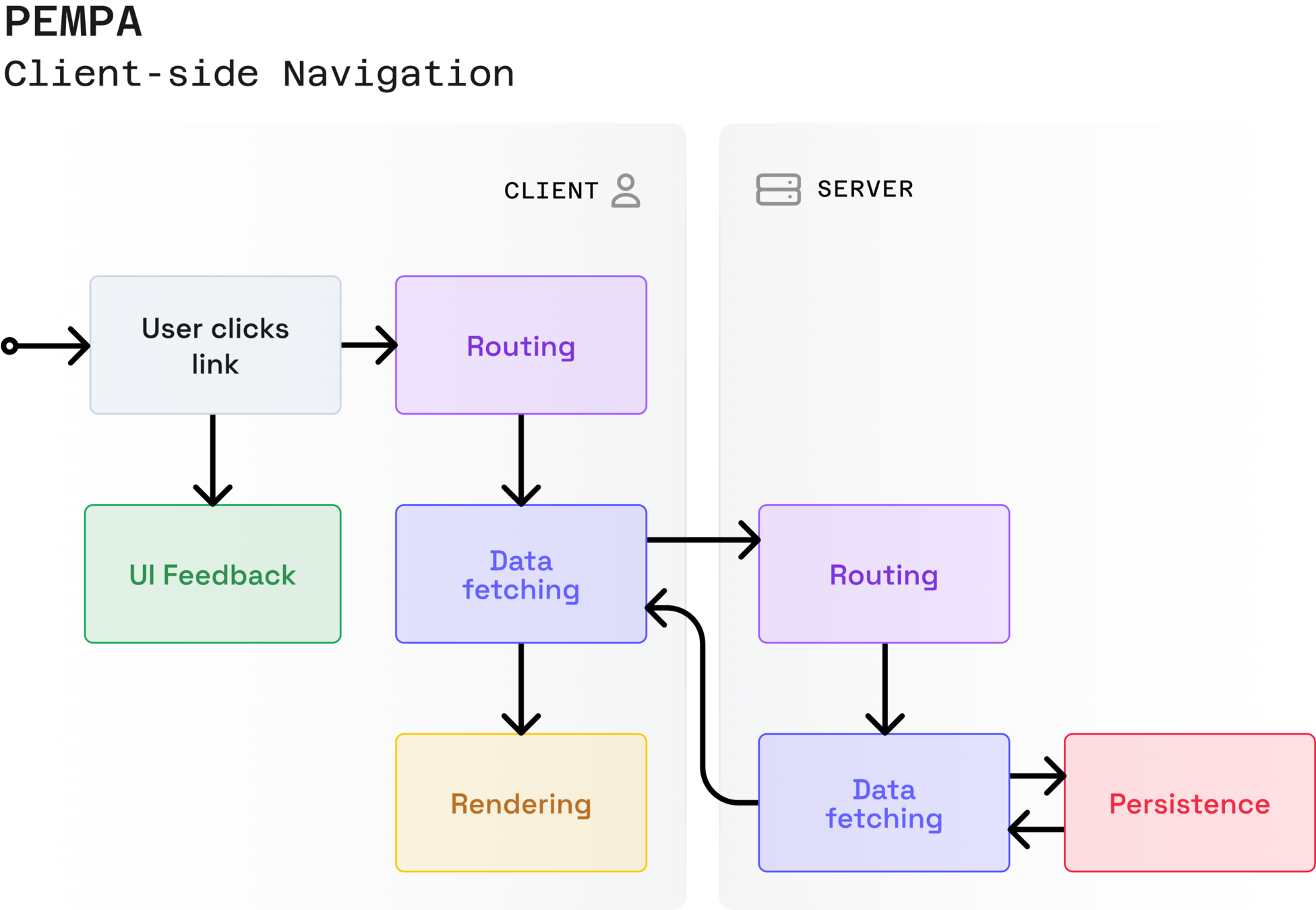
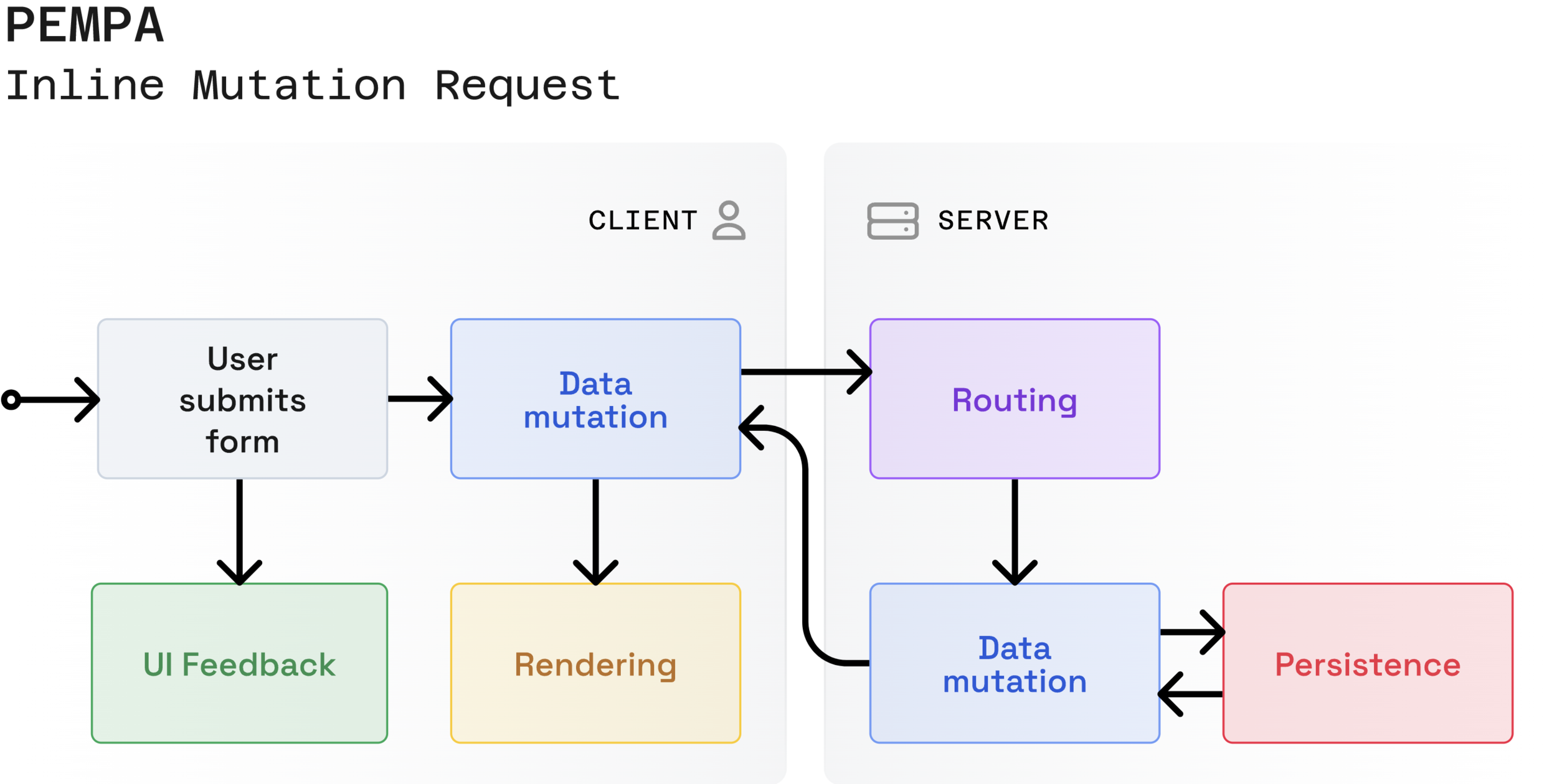

Pros
- No more refreshes
- UI Feedback control
Cons
- Prevent default
- Amount of custom code
- Code duplication
- Code organization
- Server/Client indirection
Progressively Enhanced Multi-Page Apps (PEMPA)
Single Page Apps (SPA)
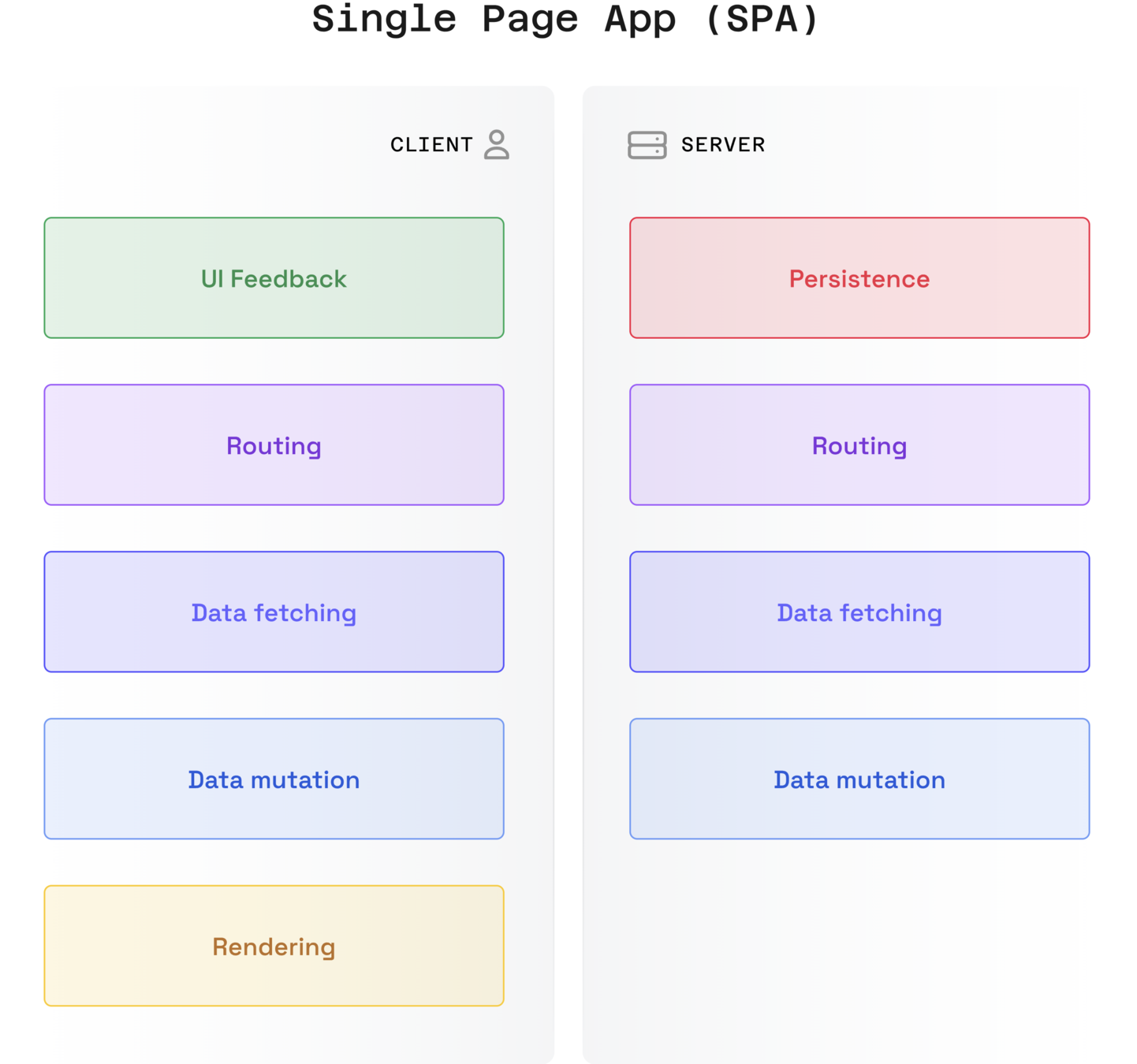
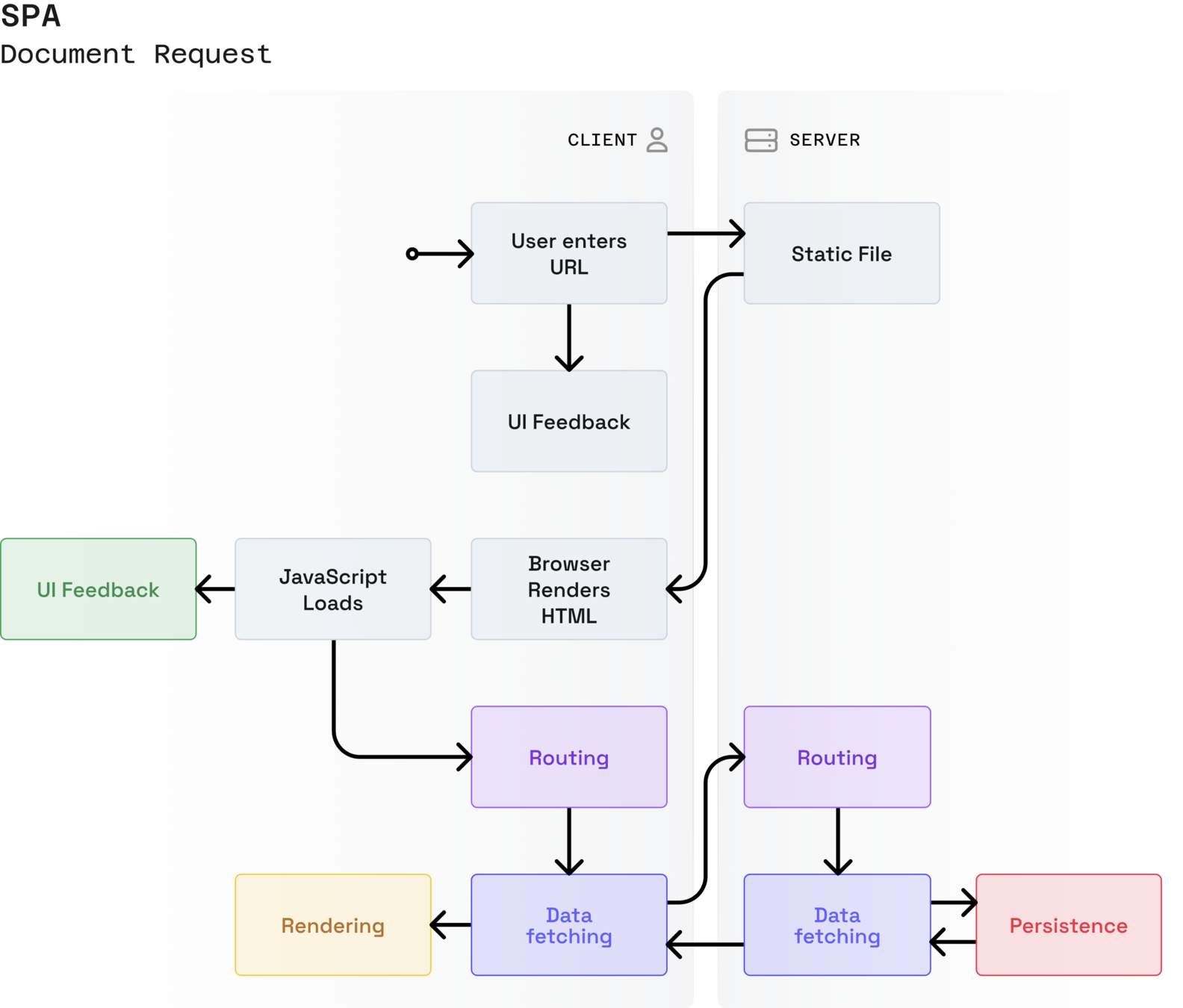
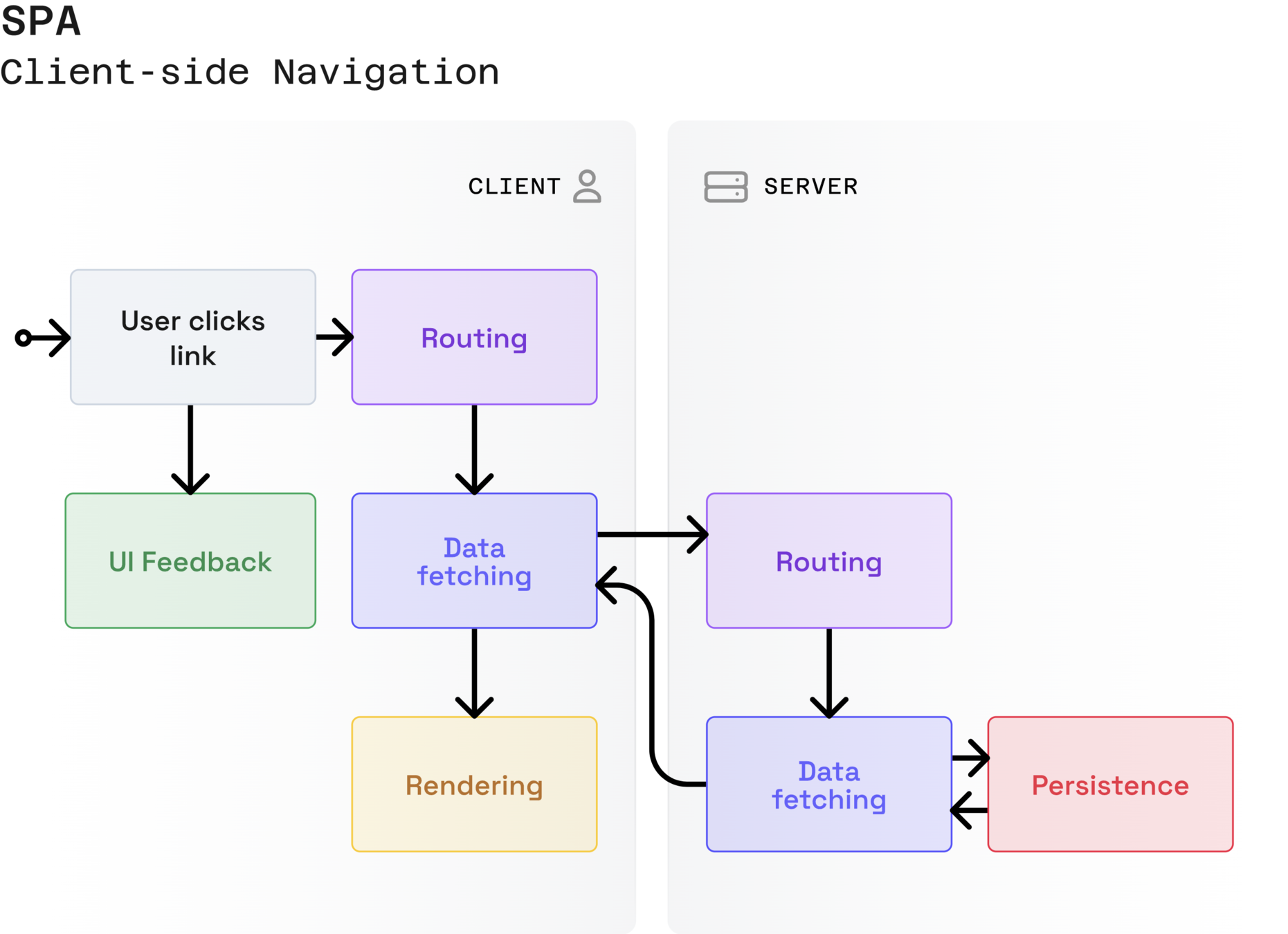
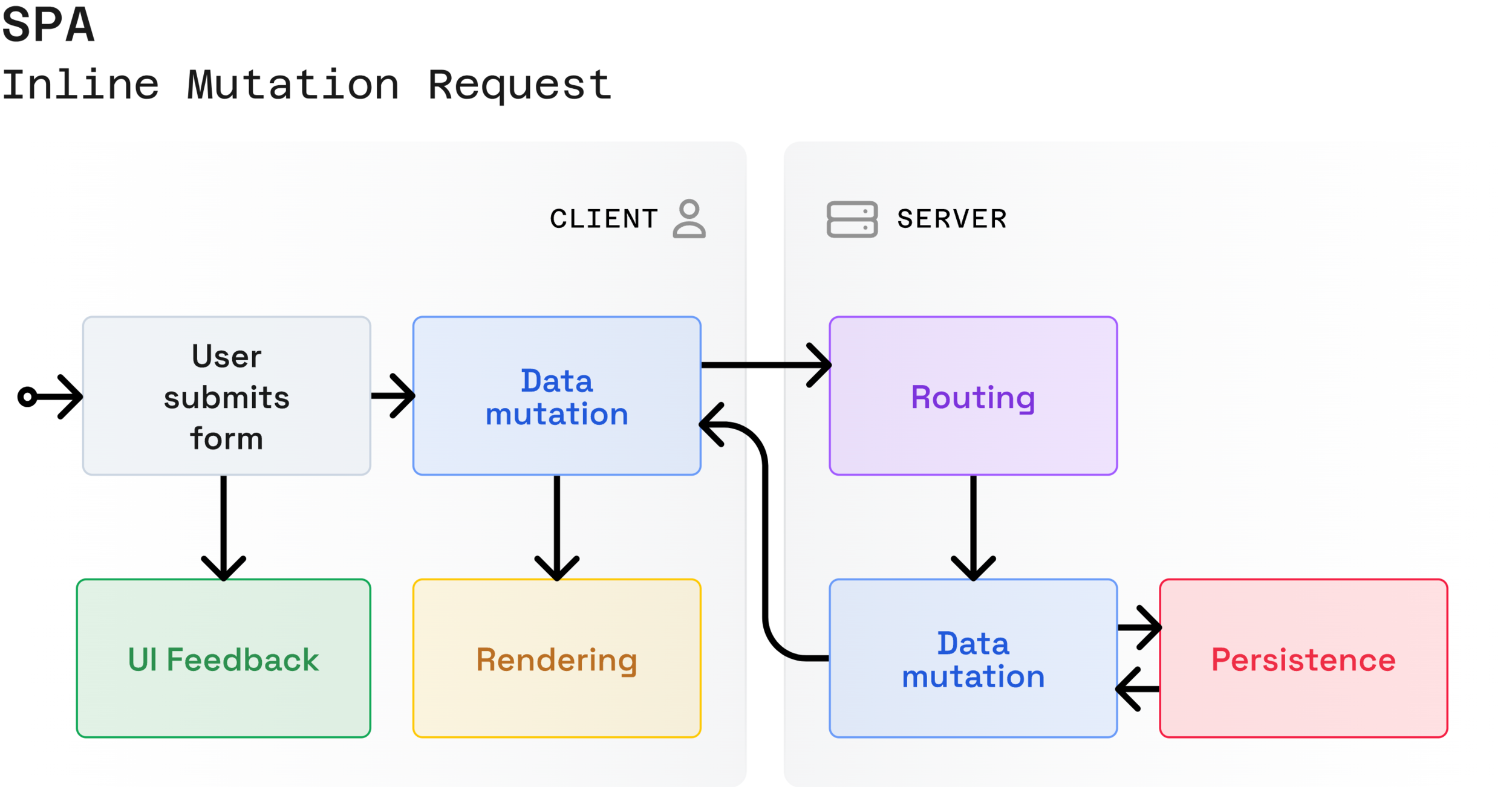
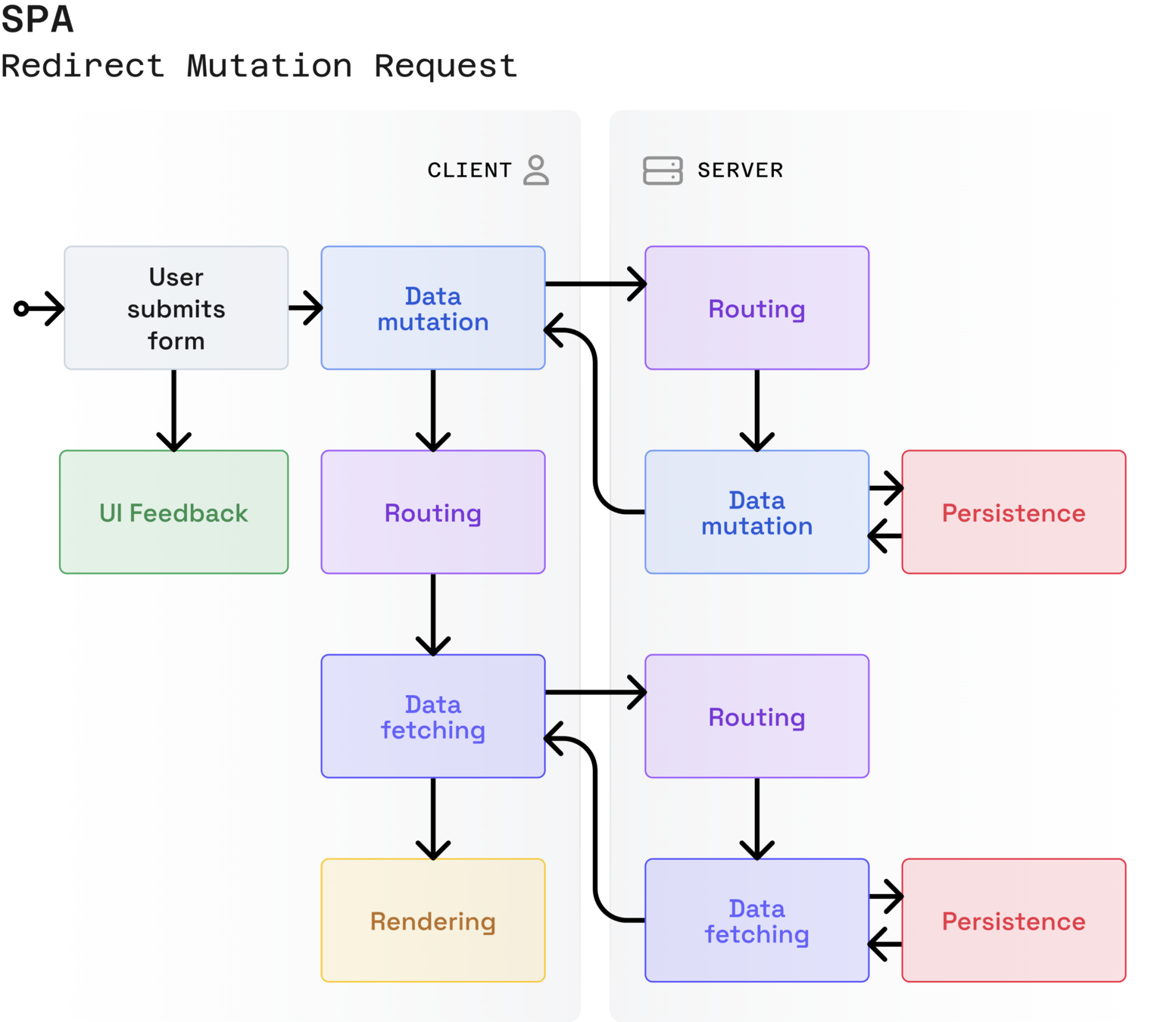
Pros
- No code duplication
Cons
- Most of PEMPAs Cons
- Bundle size
- Waterfalls
- Runtime performance
- State management
Single Page Apps (SPA)
Are you ready for the Web's Next Transition?

Introducing the PESPA!
Progressively Enhanced Single Page Apps
Progressively Enhanced Single Page Apps (PESPA)
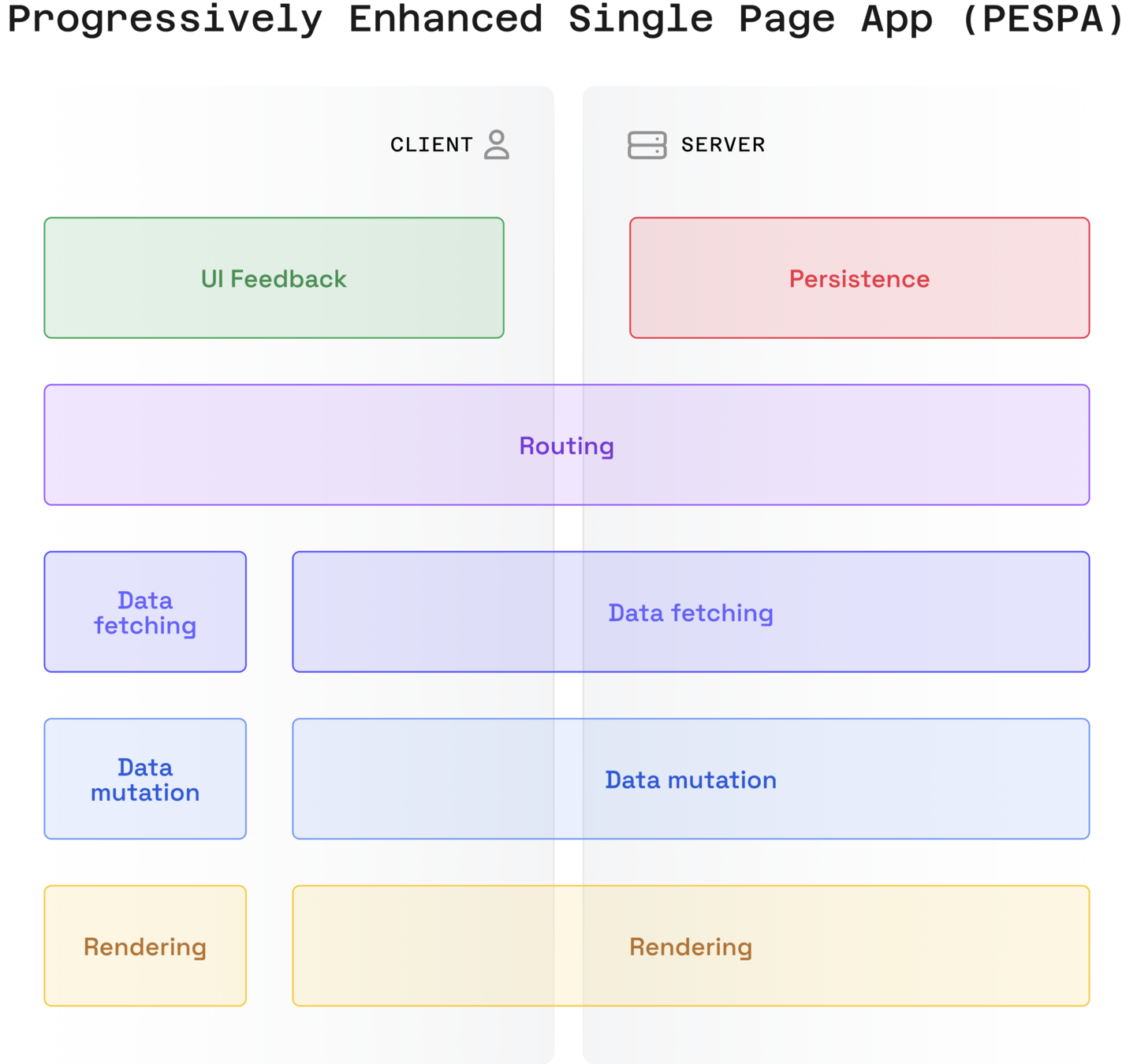
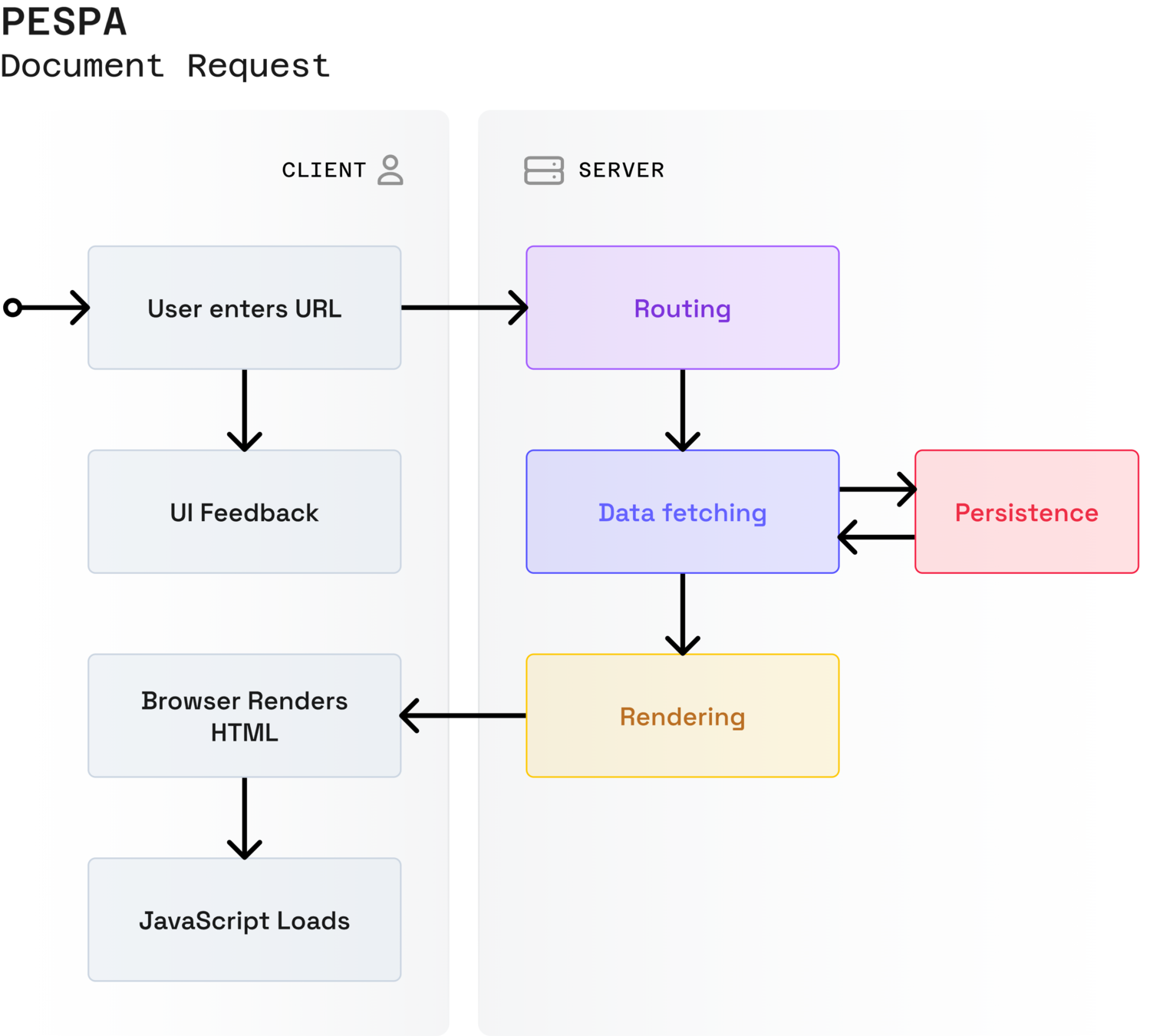
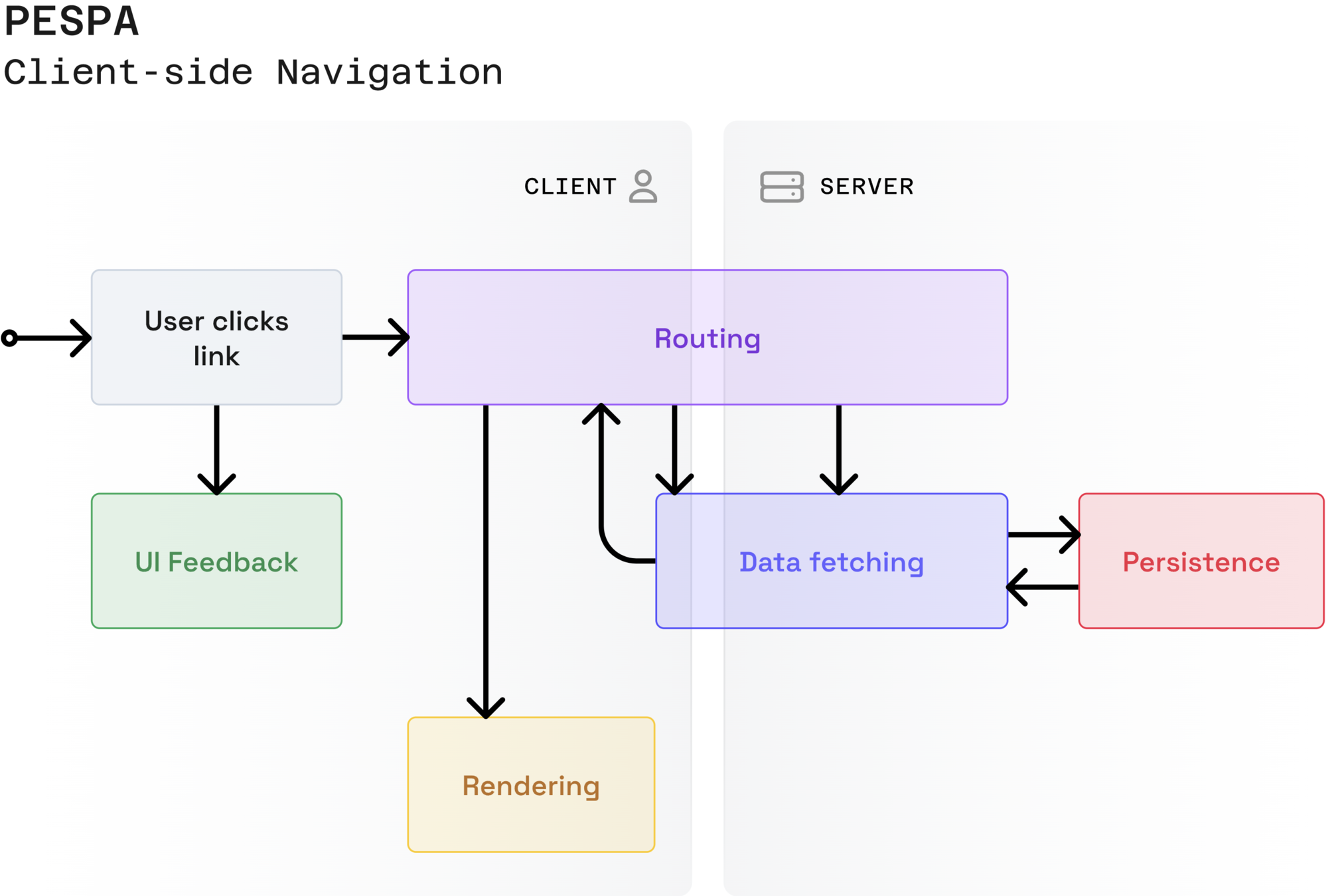
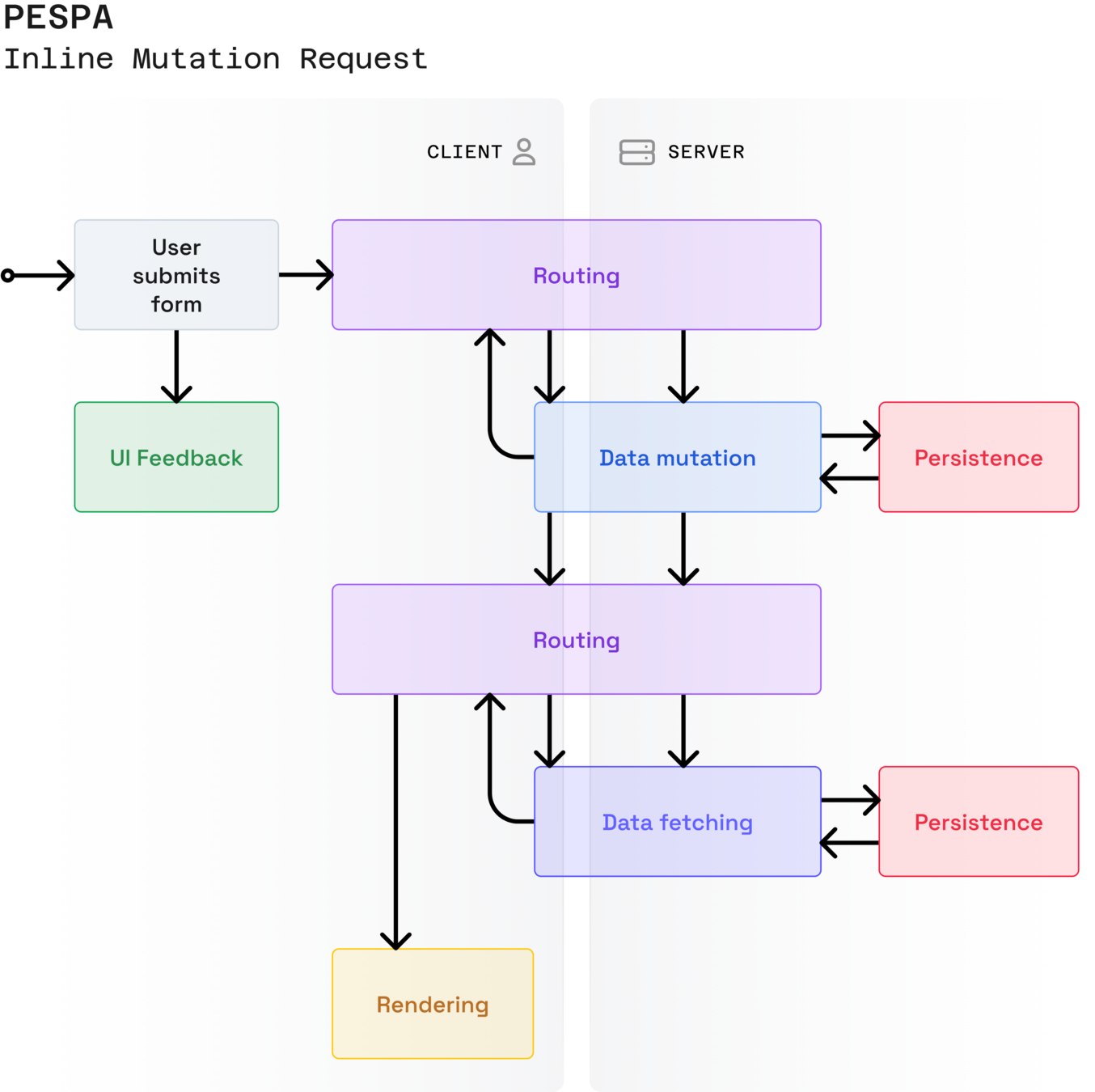

Pros
- Simple mental model
- No full-page refresh
- UI Feedback control
- Browser emulation
- No code duplication
- Reduced client-side JS
- No waterfalls
- No application state management
Cons
- Requires servers
- Server cost
- Universal code
- We will certainly discover more...
Progressively Enhanced Single Page Apps (PESPA)
?
PESPA Implementation:

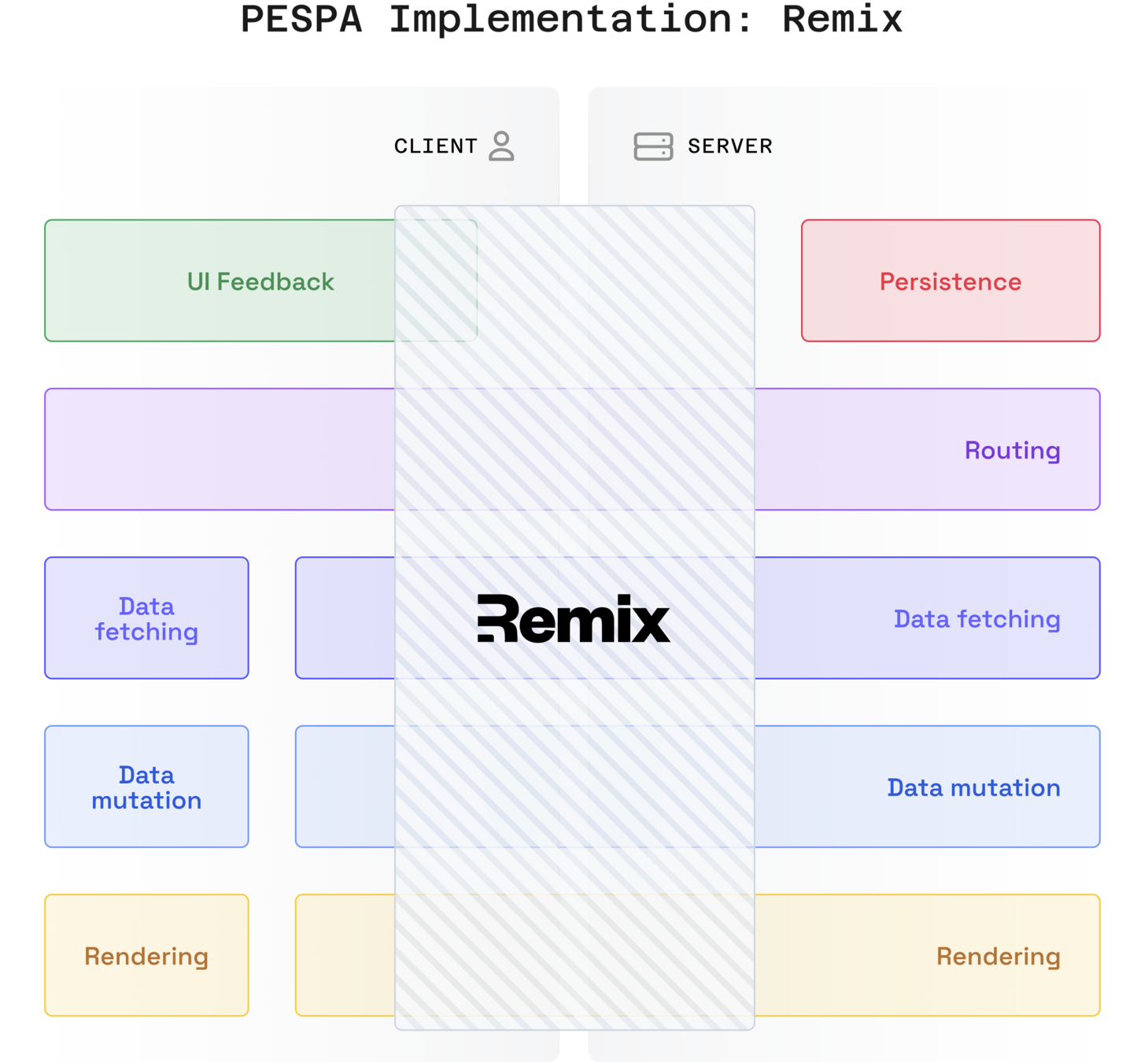
// app/routes/projects.tsx
export async function loader({ request }: DataFunctionArgs) {
const projects = await getProjects()
return json({ projects })
}
export async function action({ request }: DataFunctionArgs) {
const form = await request.formData()
const error = validateProjectForm(form)
if (error) return json({ error }, { status: 400 })
const project = await createProject({ title: form.get('title') })
return redirect(`/projects/${project.id}`)
}
export default function Projects() {
const projects = useLoaderData<typeof loader>()
const actionData = useActionData<typeof action>()
const { state } = useNavigation()
const busy = state === 'submitting'
return (
<div>
<h1>Projects</h1>
<ul>
{projects.map(project => (
<li key={project.id}>
<Link to={project.slug}>{project.title}</Link>
</li>
))}
</ul>
<Form method="post">
<label>
New Project Title: <input name="title" />
</label>
{actionData?.error ? <p>{actionData.error}</p> : null}
<button type="submit" disabled={busy}>
{busy ? 'Creating...' : 'Create New Project'}
</button>
</Form>
</div>
)
}
Resources

You belong here
Thank you!




